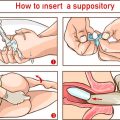Overview of Regenerative Medicine in Orthopedics
Regenerative medicine is changing the way doctors in the United States approach orthopedic care, especially for knee and ankle injuries. Instead of only treating symptoms or performing surgeries to repair damage, regenerative medicine focuses on helping the body heal itself. This innovative field uses therapies that encourage tissue regeneration, such as stem cells, platelet-rich plasma (PRP), and growth factors. These treatments are becoming more common in sports medicine clinics and orthopedic practices across the country.
What Is Regenerative Medicine?
Regenerative medicine includes a group of medical treatments designed to repair or replace damaged tissues. In orthopedics, this means using your body’s own healing power to treat injuries like torn ligaments, cartilage damage, and chronic joint pain. The main goal is to restore normal function and reduce the need for invasive procedures.
Key Principles of Regenerative Medicine
| Principle | Description |
|---|---|
| Cell-Based Therapies | Uses cells like stem cells or specialized blood cells to promote tissue repair. |
| Growth Factors | Proteins that signal the body to heal and rebuild injured tissues. |
| Tissue Engineering | Combining scaffolds with cells to create new tissue structures. |
| Biologics | Natural substances derived from living organisms used to treat injuries. |
The Role of Regenerative Medicine in Orthopedic Care
Knee and ankle injuries are common among people of all ages—from young athletes to older adults dealing with wear and tear. Traditional treatments include rest, physical therapy, medications, and sometimes surgery. However, regenerative medicine offers options that may speed up recovery and improve long-term results. For example, PRP injections use concentrated platelets from your own blood to boost healing in areas like the ACL or Achilles tendon. Stem cell therapy is another exciting option that can help repair cartilage or ligament injuries without major surgery.
Common Regenerative Treatments for Knee & Ankle Injuries
| Treatment Type | How It Works | Typical Uses |
|---|---|---|
| Platelet-Rich Plasma (PRP) | Injects concentrated platelets into injured tissue to accelerate healing. | Tendonitis, ligament sprains, mild cartilage damage |
| Stem Cell Therapy | Uses stem cells from bone marrow or fat tissue to regenerate damaged areas. | Knee osteoarthritis, cartilage defects, chronic ligament injuries |
| Amniotic Fluid Injections | Delivers growth factors from amniotic fluid to reduce inflammation and promote repair. | Ankle arthritis, soft tissue injuries |
How Regenerative Medicine Is Shaping Modern Treatment in the US
Across America, regenerative medicine is gaining traction due to its potential for faster recovery times and less downtime compared to traditional surgery. Many top orthopedic clinics now offer these therapies as part of their treatment plans. Patients appreciate having choices that focus on natural healing and may help them return to their favorite activities sooner. As research continues, we can expect even more advancements in this exciting area of orthopedic care.
2. Stem Cell Therapies for Knee and Ankle Injuries
Understanding Stem Cell Therapy in Orthopedics
Stem cell therapy is one of the most promising regenerative medicine approaches for treating orthopedic injuries, especially those affecting the knee and ankle. In the United States, this innovative treatment is gaining popularity among patients and healthcare providers seeking alternatives to surgery or long-term medication use.
How Do Stem Cells Work?
Stem cells are special cells with the unique ability to develop into different types of tissues, such as cartilage, bone, or muscle. When injected into an injured area, these cells can help repair damaged tissues, reduce inflammation, and potentially speed up recovery. This makes them especially valuable for common injuries like meniscus tears, ligament sprains, osteoarthritis, and tendon damage in both the knee and ankle.
Common Types of Stem Cells Used
| Stem Cell Type | Source | Main Applications |
|---|---|---|
| Mesenchymal Stem Cells (MSCs) | Bone marrow, fat tissue | Cartilage repair, ligament healing |
| Amniotic/Placental Stem Cells | Birth tissues (donated after childbirth) | Tendon injuries, reducing inflammation |
| Peripheral Blood Stem Cells | Bloodstream (after mobilization) | Early-stage research; less common in orthopedics |
Efficacy of Stem Cell Therapies for Knee and Ankle Injuries
Many clinical studies have shown that stem cell injections can help decrease pain and improve function in people with knee osteoarthritis or chronic tendon issues. Some patients report faster recovery and a return to sports or daily activities compared to traditional treatments. However, results may vary depending on injury type, patient age, and overall health. While stem cell therapy holds great promise, more long-term research is needed to fully understand its effectiveness.
Benefits Reported by Patients:
- Pain relief without major surgery
- Improved joint mobility and function
- Potentially shorter downtime compared to surgery
- Lower risk of complications than invasive procedures
FDA Regulations and What They Mean for Patients in the U.S.
The U.S. Food and Drug Administration (FDA) regulates stem cell therapies to ensure they are safe and effective. Currently, most stem cell products used in orthopedic clinics must follow strict guidelines. The FDA allows certain minimally manipulated stem cell treatments using a patient’s own cells under specific conditions. However, many off-the-shelf or donor-derived products are still considered experimental and may not be covered by insurance.
Key Points About FDA Regulation:
- Treatments using your own minimally processed stem cells may be allowed under current FDA guidelines.
- Treatments involving significant processing or donor cells often require FDA approval through clinical trials.
- If you’re considering stem cell therapy, ask your provider if the product is FDA-cleared or part of an approved study.
- Be cautious about clinics offering unproven treatments that claim guaranteed results.
Your Next Steps as a Patient:
If you’re interested in exploring stem cell therapies for your knee or ankle injury, talk with a licensed orthopedic specialist who understands both the science and regulations surrounding regenerative medicine in the U.S. They can help you weigh potential benefits, risks, costs, and whether you’re a good candidate based on your specific needs.
![]()
3. Platelet-Rich Plasma (PRP) and Advanced Biologics
What is PRP and Why Is It Popular?
Platelet-Rich Plasma (PRP) therapy has become a popular choice for treating knee and ankle injuries, especially among athletes and active adults in the United States. PRP involves taking a small sample of a patients blood, spinning it in a centrifuge to concentrate the platelets, and then injecting the platelet-rich solution back into the injured area. The main idea is that these concentrated platelets release growth factors that may speed up healing and reduce pain.
How Are PRP and Other Biologics Used in Clinical Practice?
In clinics across the U.S., PRP is commonly used for conditions like:
- Knee osteoarthritis
- Ankle sprains
- Tendonitis (like Achilles tendonitis)
- Ligament injuries
Besides PRP, other advanced biologics are also gaining attention, including:
- Stem cell injections (usually from bone marrow or fat tissue)
- Amniotic fluid injections
- Hyaluronic acid-based treatments
Supporting Evidence and Research Trends
| Treatment Type | Main Uses | Level of Evidence | Typical Outcomes |
|---|---|---|---|
| PRP Injections | Knee osteoarthritis, soft tissue injuries | Moderate to strong clinical evidence for some conditions, ongoing studies for others | Pain relief, improved function, possible delay in surgery |
| Stem Cell Therapy | Cartilage damage, severe soft tissue injuries | Emerging evidence, mostly experimental or under clinical trials in the US | Potential tissue regeneration; results vary widely |
| Amniotic Fluid Injections | Inflammatory conditions, chronic injuries | Limited clinical evidence; more research needed | Pain relief reported; long-term effects unclear |
| Hyaluronic Acid Injections | Knee osteoarthritis, joint lubrication issues | Well-established for osteoarthritis symptom management | Pain reduction, improved joint movement |
Acceptance Among US Clinicians
The acceptance of PRP and other biologics varies across the United States. Many sports medicine specialists and orthopedic doctors offer PRP as part of their treatment options because patients are looking for less invasive alternatives to surgery. However, insurance coverage can be limited since not all treatments have enough large-scale research backing them yet. Stem cell therapies are often only available through clinical trials or specialized centers.
The American Academy of Orthopaedic Surgeons (AAOS) recognizes the potential of biologic therapies but emphasizes the need for more high-quality research. As evidence grows and technology improves, these regenerative medicine options are expected to play an even bigger role in treating knee and ankle injuries.
4. Technological Innovations and Minimally Invasive Techniques
Regenerative medicine for orthopedic knee and ankle injuries is evolving rapidly thanks to new medical technologies. These innovations are making treatments more effective, less invasive, and tailored to the individual needs of patients in the United States.
3D Printing: Personalized Solutions
3D printing has transformed how doctors address joint injuries. Using digital scans, healthcare providers can create custom implants and surgical guides that match a patient’s unique anatomy. This personalized approach improves outcomes, shortens recovery times, and reduces the risk of complications. For example, 3D-printed scaffolds can help guide tissue regrowth exactly where it’s needed in the knee or ankle.
Tissue Engineering: Building New Tissues
Tissue engineering combines cells, engineering materials, and growth factors to repair or replace damaged cartilage, ligaments, or bone. Instead of relying solely on donor tissue or traditional surgery, doctors can now encourage the body’s own cells to regenerate healthy tissue. This approach holds great promise for treating sports injuries, osteoarthritis, and other common orthopedic problems.
Minimally Invasive Procedures: Faster Recovery
Minimally invasive techniques use small incisions and specialized tools to treat joint injuries with less pain and quicker healing compared to traditional open surgery. Arthroscopy, for example, allows surgeons to see inside the joint with a tiny camera and make precise repairs. This means many people can return to daily activities or sports much sooner.
Comparison of Emerging Technologies in Knee and Ankle Treatment
| Technology | Main Benefit | Common Uses |
|---|---|---|
| 3D Printing | Customized implants & guides | Knee replacements, cartilage repair |
| Tissue Engineering | Promotes natural regeneration | Cartilage/ligament repair, bone defects |
| Minimally Invasive Surgery | Less pain & quicker recovery | Ligament tears, meniscus injuries |
What This Means for Patients in America
The combination of these cutting-edge technologies is making orthopedic care more efficient and patient-friendly than ever before. Whether you’re an athlete wanting to get back on the field or someone seeking relief from chronic joint pain, these advances offer new hope for long-term recovery with fewer side effects and disruptions to your daily life.
5. Challenges, Accessibility, and Future Directions
Barriers to Widespread Adoption
While regenerative medicine offers exciting possibilities for treating knee and ankle injuries, several barriers make it difficult for everyone in America to benefit from these advances. Below is a breakdown of the most common challenges:
| Barrier | Description |
|---|---|
| Insurance Coverage | Many insurance companies consider regenerative treatments like stem cell therapy or PRP (platelet-rich plasma) as experimental or not medically necessary. This means patients often have to pay out-of-pocket, making these options less accessible. |
| Cost | The price of regenerative procedures can range from several hundred to thousands of dollars per treatment. Without insurance support, this cost puts these therapies out of reach for many people. |
| Patient Access | Access depends on where you live. Urban areas may have clinics offering advanced regenerative treatments, but rural communities often lack specialists trained in these new methods. |
| Lack of Standardization | Different clinics use different protocols for similar treatments, making it hard for doctors and patients to compare outcomes or know what to expect. |
| Regulatory Hurdles | The FDA is still working on clear guidelines for some regenerative therapies. This can slow down the approval process and make it harder for new treatments to reach the market. |
Current Accessibility in the U.S.
Most regenerative orthopedic care is currently found in large cities or specialized sports medicine centers. Patients may need referrals or travel long distances for treatment. Financial barriers are significant since few insurance plans cover these services, and clinical trials are limited to certain academic medical centers.
Who Can Access Regenerative Treatments?
- Athletes and high-profile patients: Often get early access due to personal funding or team resources.
- Patients with chronic joint pain: May seek out these treatments when traditional options fail, but must pay out-of-pocket.
- General public: Limited access unless living near major metropolitan areas or able to afford private care.
Future Directions and Predictions
The future of regenerative orthopedic care looks promising as research continues and more clinical evidence emerges. Here’s what we might expect in the coming years:
| Trend | Impact on Patients |
|---|---|
| Improved Insurance Coverage | If long-term studies prove effectiveness, more insurance providers may start covering regenerative therapies, increasing accessibility for a broader population. |
| Lower Costs Over Time | As technology advances and becomes more common, costs could decrease, making treatments more affordable for everyday Americans. |
| Expanded Training & Awareness | More healthcare providers will learn about regenerative medicine, allowing patients in suburban and rural areas better access to these treatments. |
| Personalized Medicine Approaches | Treatments may become more tailored to each patient’s biology, improving results and satisfaction with knee and ankle injury recovery. |
| Simplified FDA Approval Pathways | Clearness in regulations could speed up how quickly new therapies reach clinics nationwide. |
The Road Ahead for Regenerative Orthopedic Care in America
The journey toward making regenerative medicine part of mainstream orthopedic care is ongoing. As awareness grows and more evidence supports its use, patients from all backgrounds may eventually benefit from these innovative options for knee and ankle injury treatment.


